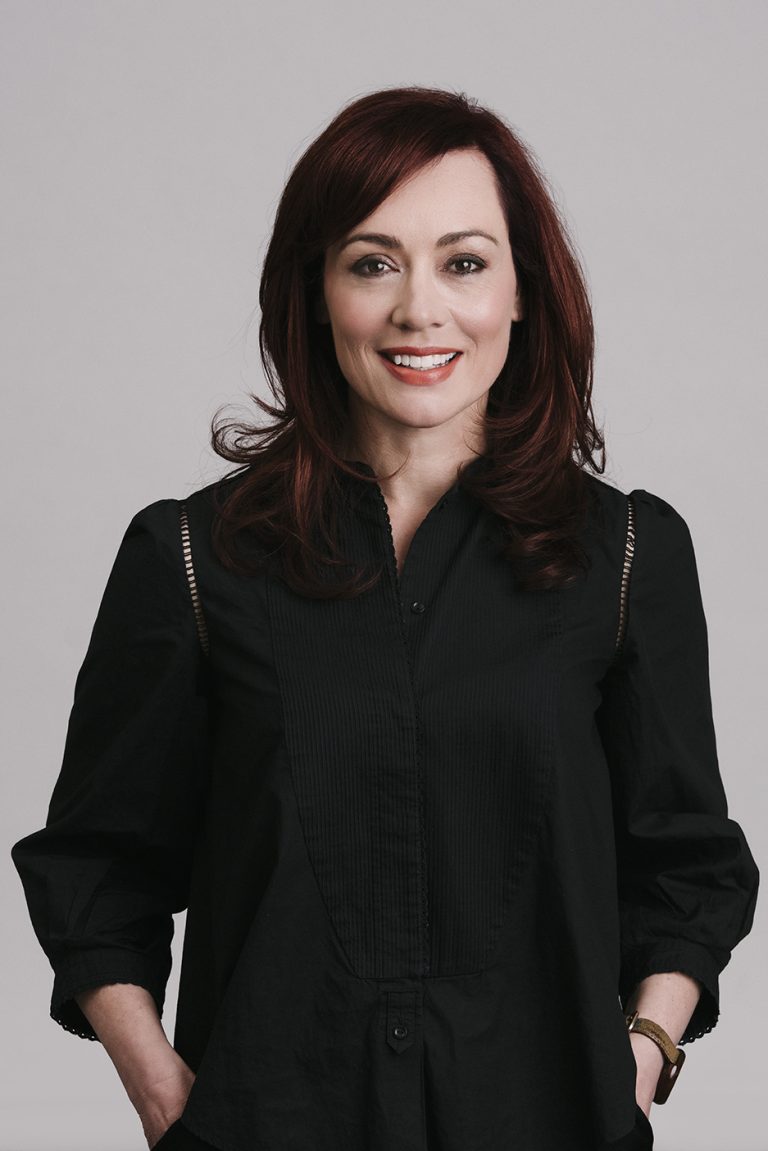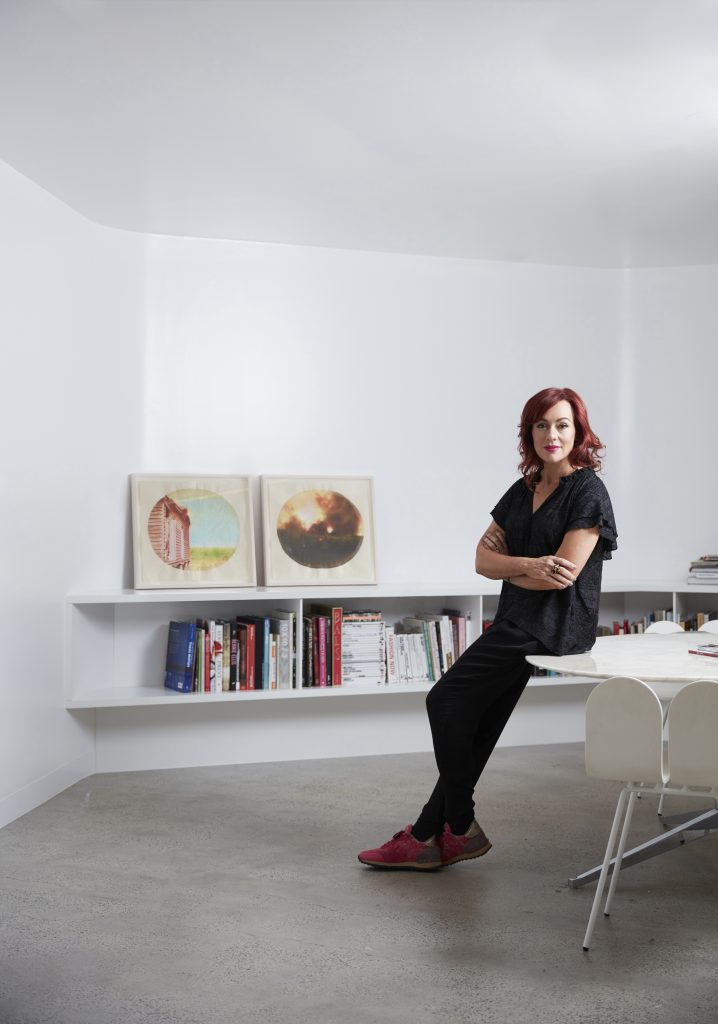Curator Natalie King on her new role as Enterprise Professor at the VCA

Natalie King curates Australian and international programs that include exhibition making, publications, lectures, workshops and cultural partnerships across contemporary art and Indigenous culture. She discusses her new role as Enterprise Professor at the Victorian College of the Arts.
By Paul Dalgarno
Hi Natalie, congratulations on being appointed Enterprise Professor. Can you tell us what this role will involve and what your hopes for it are?
I’m elated to take up the role of Enterprise Professor as I’ve had an association with the Victorian College of the Arts (VCA) as a Senior Research Fellow since 2014. My background is in museums, which are obviously quite formal institutions, so I find it liberating to work in such a creative and informal environment surrounded by artists and experimental ideas in formation.
The Faculty of Fine Arts and Music’s Southbank campus is undergoing immense transformation and I’m particularly thrilled to be in a buoyant locale with the newly-opened Buxton Contemporary alongside the renovation of the former Police Stables into the VCA’s new visual arts wing. We live in perilous times yet there seems to be a genuine sense of hope and optimism on the Faculty’s Southbank campus.
My preference is to work across multiple domains, spanning the lifecycle of artistic production and management from exhibitions, commissions, partnerships, stakeholder relations, mentoring schemes, lectures, keynotes, publications, collateral events, workshops and public programs. I hope to bring some of these “para-curatorial” initiatives with the broader international arts sector to the VCA as a form of engagement.

Did you grow up around visual art?
Actually I didn’t, but I had an early predilection for literature and spent long hot summers at our family beach shack on the Mornington Peninsula devouring novels by D.H. Lawrence, Daphne du Maurier and Emily Brontë.
I was also very close with my paternal grandmother, who was a ballerina. When I was a child, she often took me to the Forum Theatre or Arts Centre to see matinee ballet performances. I enjoyed her proximity and the breathless sensation when the velvet curtain was raised.
You were curator of Tracey Moffatt: My Horizon last year – the first solo Venice Biennale exhibition by an Indigenous artist. How was that?
Tracey is immeasurably creative, unstintingly passionate and habitually outspoken. She has said that if she wasn’t an artist she would be out slashing tires with a butcher’s knife. The curating part commenced as soon as I was appointed, working as a female triumvirate with Tracey, the Biennale’s Commissioner Naomi Milgrom and myself. The role was unremitting yet triumphant.
My job was to act as an accomplice and advocate of Tracey’s vision as well as being the guardian of her time. Tracey is feisty and fun with a fierce intellect and forensic memory. She voraciously consumes literature, poetry and popular culture. She also has an epic knowledge of the history of cinema and photography.
I accumulated several notebooks from our studio visits and transmitted some of that material into a 160-page illustrated hardback publication, Tracey Moffatt: My Horizon (Thames & Hudson), which has been shortlisted for the Cornish Family Publishing Award.
As well as me, as editor and feature essayist, there were contributions from Miles Franklin-winning author Alexis Wright, Aboriginal activist and author Djon Mundine OAM, US feminist Camille Paglia, Aboriginal academic and poet Dr Romaine Moreton, and Germano Celant of the Prada Foundation.
What’s the secret to being a good/effective curator?
The etymology of the word “curator” comes from the verb “curare”, which means to guard or take care, and my role is to take care of artists and their precious ideas.
You have a professional interest in Indigenous Australian art. Can you talk a little about this, please?
I have a history of working with Aboriginal artists including Destiny Deacon, Fiona Foley, Michael Cook, Bindi Cole, Michael Riley and Christian Thompson. Each of those artists reminds me that we need to work towards reconciliation and cultural activism.
I also have an ongoing co-curation practice with Djon Mundine. It’s rare for an Indigenous and non-Indigenous curator to collaborate and exhibit Indigenous and non-Indigenous artists side by side, but we operate as curators in an open conversation, with detours and forays into unknown places.
We travelled together to undertake research in a number of cities – including Sydney, Melbourne, Adelaide and Alice Springs – when we co-curated the TarraWarra Biennial 2014: Whisper in My Mask, and we find ways for our ideas to converge and coalesce.

Is there a piece of advice or philosophy that has held you in good stead throughout your career?
I like the famous Louise Bourgeois’ quote: I have been to hell and back, and let me tell you, it was wonderful.
Can you tell us a bit about your upcoming event at Federation Hall, SUPERPOSITION: Equilibrium & Engagement, at which you’ll be conversing with internationally renowned artists, Tiffany Chung and NS Harsha, both of whom are participating in the 21st Biennale of Sydney?
I’ve forged a partnership between the VCA and Biennale of Sydney and am proud that our students, staff and the general public will have access to two exceptional artists from Asia who are participating in this year’s Biennale. Tiffany Chung and NS Harsha will talk about their work followed by a conversation where I will discuss their shared interest in mappings and materiality, asylum and displacement.
I have a history of interviewing artists such as Pussy Riot, Pipilotti Rist, Ai Wei Wei, Bill Henson, Joseph Kosuth, and I’m currently guest-editing a suite of interviews with Biennale of Sydney artists for Ocula magazine.
I returned from Sydney last night brimming with inspiration. Apart from Chung and Harsha, a highlight of this year’s empathically curated Biennale is Ai Wei Wei’s mammoth inflatable black raft boat, Law of the Journey, advocating for the rights of refugees and displaced peoples. The gigantic structure sits on a base with quotes such as Franz Kafka’s Letter to Oskar Pollak (1903):
“We are as forlorn as children lost in the woods. When you stand in front of me and look at me, what do you know of the griefs that are in me and what do I know of yours.”
I found this work particularly prescient.
What do you do to relax?
I like listening to podcasts, especially when I walk late at night. Or, under cover of darkness, I traverse the familiar streets of my neighbourhood with my dog – a great way to decompress after work.